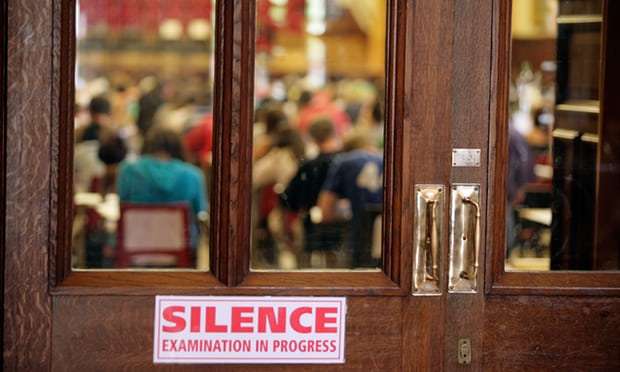The government-funded research identified the two groups as being most at risk of displaying high symptoms of depression at the age of 14. In contrast, more intelligent boys and boys from the most deprived backgrounds appear not to suffer from the mental troubles that affect their female peers, the academics discovered.
The findings are based on detailed questionnaires filled in by 9,553 boys and girls aged 14 across the UK as part of the Millennium Cohort Study (MCS), which is tracking the progress of people born in 2000 into adulthood.
They add to growing evidence that teenage girls are particularly vulnerable to mental health difficulties. NHS figures show there were sharp increases between 2005/06 and 2015/16 in the number of girls under 18 admitted to hospital in England because they had self-harmed by cutting (up 285%), poisoning (42%) or hanging themselves (331%).
The researchers, led by Dr Praveetha Patalay, also found that being overweight, a history of being bullied and not getting on with peers were the three most common causes of depression in boys and girls aged 14. Their previous finding, that 24% of 14-year-old girls and 9% of boys that age were depressed, stirred widespread debate last year.
Dr Nihara Krause, a consultant clinical psychologist, said the findings about brighter and poorer girls were worrying, given the known links between depression and self-harm, and self-harm and risk of suicide.
“Some children who are depressed will self-harm. Some people say that physical pain is easier to tolerate than emotional pain,” she said. “What’s very concerning, in those who are depressed, is the link with suicide, because more and more studies show that self-harm is a predictor of suicide. Someone who self-harms is more likely to try to take their own life, especially if they are depressed. So these new findings are a concern from that point of view.”
Patalay said girls from families in the bottom two quintiles of household income were 7.5% more likely to be depressed at 14 than girls from the highest income families, but the same pattern was not found in boys.
Cleverer girls also had a significantly higher risk of having high depressive symptoms at 14, she said, and she was doing further research to calculate that risk more precisely among those with “higher childhood cognitive scores”.
Krause said: “Part of it could be that [brighter girls] have a ‘hyper brain’, a more active brain, which often means they have a much higher emotional reaction to things and they are constantly overthinking things.
“For example, if there’s a friendship situation that might be a concern to them, children of higher intelligence might think about all sorts of reasons why this situation has developed and get stressed about it.”
She pinpointed pressure on children to succeed at school – from their parents, schools and themselves – and competition for university places and jobs as a key cause of anxiety and depression in teenagers. In addition, some bright pupils are pushed too much, and those children can develop academically but be less adept at forming friendships, she suggested.
Children of either sex who have been bullied are 5.5% more likely to be depressed at 14, and boys or girls who do not get on well with their peers are 1.5% more likely to exhibit depressive symptoms.
The researchers also found that overweight boys and girls were 5% more likely to be depressed. This has prompted speculation as to whether the huge recent increase in childhood obesity is helping to drive what experts say is a growing mental health crisis in young people.
“We found a substantial link between being overweight and being depressed. Rates of overweight and mental ill-health are increasing in childhood, and they both have enormous consequences through our lives. Tackling these two health issues should be a public health priority,” Patalay said.
Emla Fitzsimons, a co-author of the findings and director of the MCS, said: “The study highlights a sharp increase in mental health problems among girls between ages 11 and 14. We certainly need to be looking at how the use of social media and cyberbullying may affect girls and boys differently.”
Dr Nick Waggett, chief executive of the Association of Child Psychotherapists, said it was unhelpful to highlight bright or poor girls as being at particular risk “when we already now there is a significant burden of mental illness in children and young people, including adolescent girls, and that there is a substantial shortfall in specialist services for them.”
Claire Murdoch, NHS England’s national mental health director, said: “After decades in the shadows, children’s mental health is finally in the spotlight, with more young people seeking help and years of unmet need being addressed. The NHS has responded, with 70,000 more young people set to get help, £1.4bn of extra funding and eating disorder and perinatal mental health services covering the whole country.
“But if the NHS is to meet fully the scale of the challenge then government, schools and councils need to work with us and our patients over the long-term.”
The Guardian
More about: girls











-1745485667.jpg&h=190&w=280&zc=1&q=100)




































